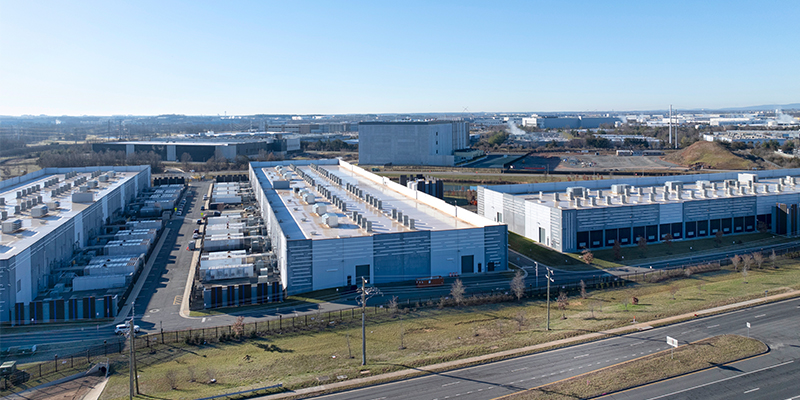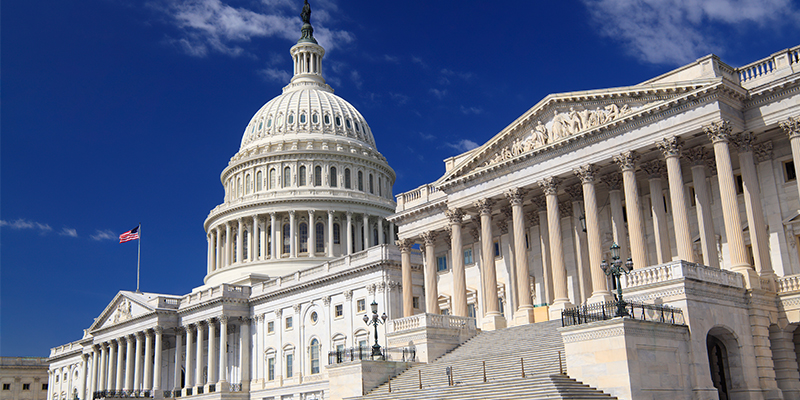“We’re in a really unique point in history in the sense that we have this huge demand curve for data centers at a time when we also have some constraints in power,” said Elissa Wilson, attorney, Vorys, Sater, Seymour & Pease, LLP, to begin a panel discussion on data center development at NAIOP’s CRE.Converge. “But the reason data centers are so important is they are fundamental to our modern economy. They’re fundamental to our way of life. They’re fundamental to every single transaction that happens online.”
“Every single person in this room accesses a data center in some way, shape or form every single day, and probably every single time you use your phone,” said Tony Burkart, head of market development and economic development, Google. Even a simple task like navigating directions to a local restaurant uses a data center.
Contrary to the perceptions of some state and local governments that data centers take up large amounts of land and power without being offset by large gains in jobs, Burkart said data center development is a catalyst for growth in economies. The primary impacts are data center construction and operations, he said, but also in the wider economy through all the different business services that are enabled using our phones and other digitized tools like AI and the cloud.
“I think it’s important to not lose sight of, ‘what does the community need out of this?’ It can’t just be all about, ‘I need X amount of infrastructure,’ because if you don’t balance that equation, eventually it’s a lopsided relationship,” said Burkart. “That’s one of the biggest sells to the community. You’re going to help build out their infrastructure, which will not only help your project but future projects down the line.”
Power is a critical concern for data center development – along with many other industries. U.S. data center demand is forecast to grow by some 10% each year until 2030, according to McKinsey and Company. And Goldman Sachs says AI is poised to drive 160% increase in data power demand.
“It’s not just data centers that are adding to the power demands in the U.S.,” noted Burkart. “You have electrification of automotive, reshoring of major manufacturing, and a lot of these things are happening in the same places where you have large data center clusters.”
Charlotte Lamping, practice manager, Henderson Companies, Ltd., noted that her firm participates in master planning for big server providers and brings the owner and entity to the table together for conversations.
“The goal there is to negotiate, not just how much power can you give us, but how quick can you turn it on and what’s it going to cost me?” Lamping said. “So that’s a whole contractual negotiation that ultimately decides if the land is even worth building on. There are a lot of other technical considerations, but that’s really the primary one.”
“The nuances of your power needs end up driving a lot of your business decisions,” Lamping said. “If you’re talking about investing in an area where the land itself is not particularly competitive, a lot of these firms will end up footing the bill for some of this expansion, and sometimes that affects the rate negotiation that they get. If they’ll build a substation, they can get a pretty cheap rate for power.”
“How much power can we get?” is a central question, agreed Randall Phelps, P.E., project director and principal, Kimley-Horn. He also noted the importance of right-of-way acquisition and how many property owners are involved, and the willingness of the local jurisdiction to assist in acquiring that right of way.
“One solution for that is through development or infrastructure agreements, making sure you arrange for easements to be provided and have the local jurisdiction be responsible for obtaining those,” Phelps said. “They have the ability to obtain those through other means that private entities don’t, and you can wind up with better options if they’re the ones responsible for obtaining that and securing it through agreements.”
Some state and local governments offer incentives for data center development, but it’s important to evaluate the whole picture, said Burkart, both the regulatory side and the tax side.
“When you look at incentives, it’s important to look at the baseline situation, because I’m thinking, ‘Oh, I’m saving all this money because I got an abatement.’ You have to understand the full baseline of taxes,” said Jon Stock, attorney, Vorys, Sater, Seymour & Pease, LLP.
Addressing the NIMBYism that often accompanies data centers, “There are benefits that are uniquely associated with the actual location of the data center,” Burkart said. He shared an example of a Google data center in Henderson, Nevada, that supported over 5,245 total jobs and generated $312 million for workers in 2020.
“Data centers are such capital-intensive developments that even when you have really significant tax abatements, the contributions to the local schools are still significant,” said Lamping. “So, they can be really great projects for school districts, and they can be important allies, particularly because they don’t bring a massive influx of population that adds a lot to the cost side of the ledger.”
This post is brought to you by JLL, the social media and conference blog sponsor of NAIOP’s CRE.Converge 2024. Learn more about JLL at www.us.jll.com or www.jll.ca.









